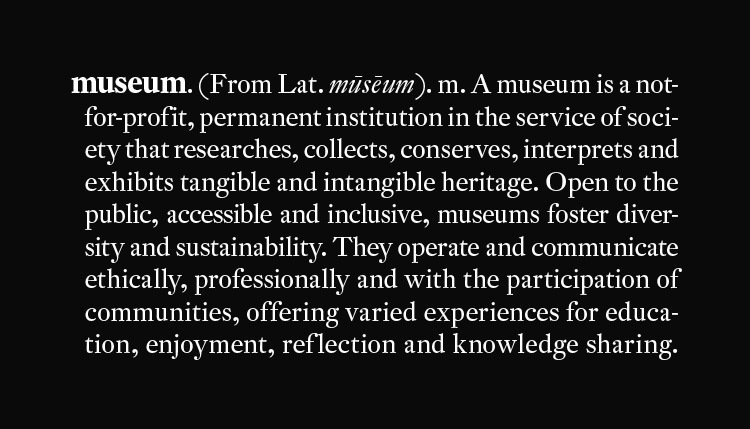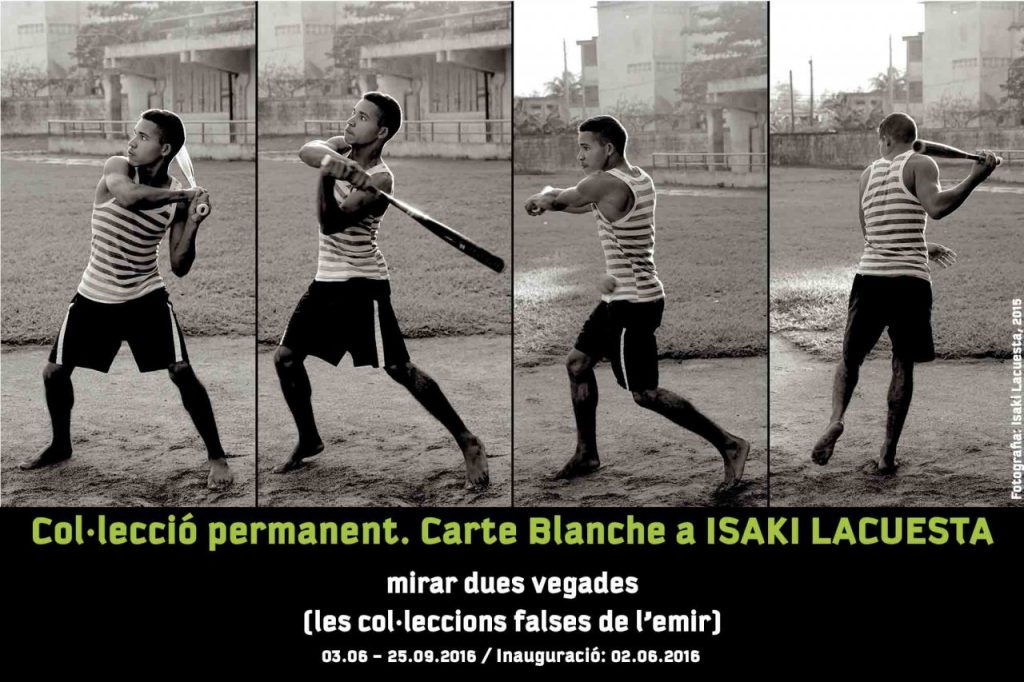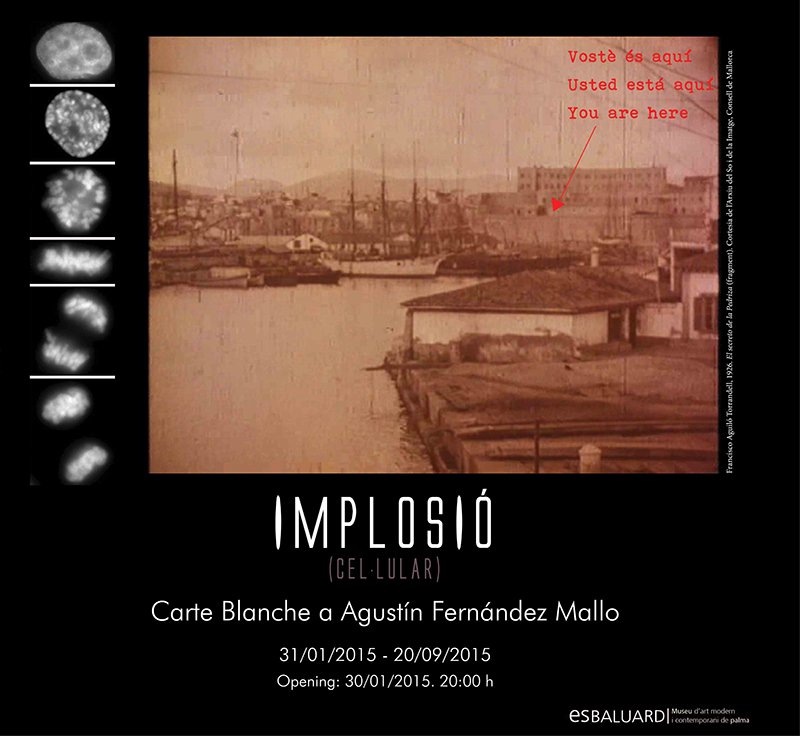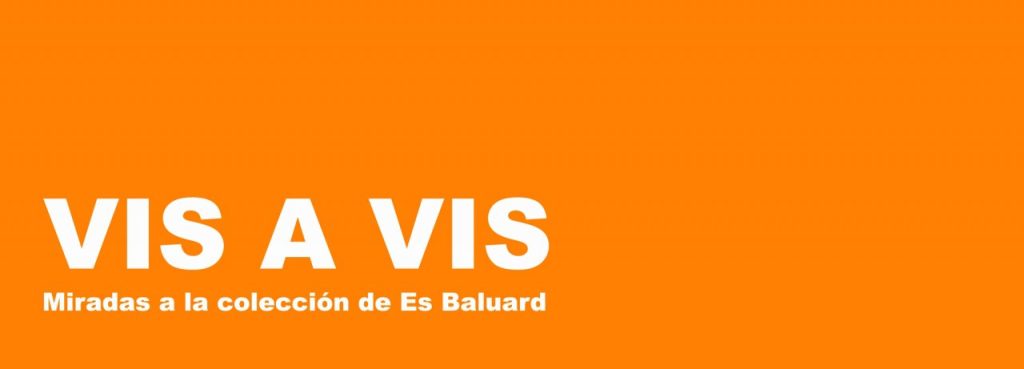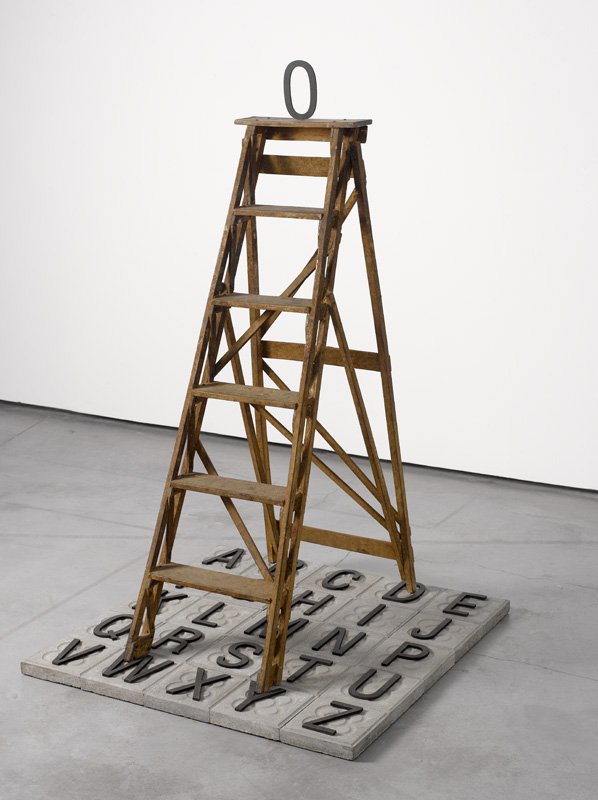
- Artist:
- Joan Brossa
- Date:
- 1986
- Technique:
- Wooden stepladder, tiles and wooden letters
- Dimensions:
- 160 x 100 x 100 cm
- Origin:
- Es Baluard Museu d'Art Contemporani de Palma
- Registration number:
- 376
- Exposed:
- No
The piece is comprised of a rustic-looking wooden stepladder situated on a wooden alphabet which in turn rests on paving made up the typical tiles from the pavements of Barcelona’s Eixample district (known as “panot de flor” paving tiles, designed by Josep Puig i Cadafalch in the early 20th century for Casa Amatller).
Parany (Trap) is a good example of one of the characteristic lines of Brossa’s production: the famous object-poem. Joan Brossa developed his work at all times in a dialogue of poetry and practice, between the literary and the visual. We can locate the famous object-poems within this creative line; the poet includes in them everyday objects that were found by chance and, without manipulating them, presents them assembled, together, to activate memories in the spectator which, in combination, offer new interpretations of the same. Brossa presents the elements just as they are, apparently all he does is assemble them, but in doing so he re-signifies them, provoking mental and symbolic play and activating the imaginary into which they are inserted, following in the wake of Marcel Duchamp’s readymades.
In Brossa’s career, we find certain key elements that are repeated throughout his production, with the use of the alphabet as a unifying factor. The alphabet, letters, are more than elements of narration for him, becoming the protagonists of the work in themselves. Taking them as found objects, valued even individually, the poet constructs posters, poems, pieces and object-poems of a sculptural nature, as in the case of Parany. The wooden stepladder sits on the Catalan-language alphabet in which the O has been removed from its natural order, to be raised up to the top of the steps. Without the O, the grid is perfect: five rows on each side close off an impeccable space which – it seems – condenses all the typographical elements necessary to form the backbone of a language. But it is an illusion, and at the same time a “trap”, because the O is missing that plays the visual “trick” (the parany) through its typographical similarity to the missing 0 of the numerical scale.
I.LL.
The only child of an engraver and a zarzuela singer, Brossa frequented the theatre with his father and acquired an interest in this artistic discipline from an early age. He fought in the Spanish Civil War on the Republican side, and it was precisely during this conflict that he began to write his first texts and poems. After the war was over, when Franco and his supporters took over, he moved to Salamanca to complete his national service and it was there that he developed an interest in reading and discovered Freud, which led him to study psychology, a discipline he associated with literature. As a result, he began working on writing hypnagogic images (images resulting from subconscious dreams) and psychic automatism, and gradually shifted towards surrealism.
Through the painter Joan Prats, in 1941 he met the poet Josep Vicens Foix, the greatest exponent of Catalan literary surrealism, who in turn introduced him to the members of the ADLAN group and in particular to Joan Miró. In 1948 he took part in the creation of the magazine Dau al Set with Arnau Puig, Antoni Tàpies, Modest Cuixart, Joan Ponç and Joan Josep Tharrats, amongst others, a project conceived as an escape route from the control of the dictatorship. During the 1940s, Brossa wrote Dadaist plays, created his first work for ballet and first two film scripts. His work from 1950 on is characterised by great social and political commitment, in addition to an increasing tendency towards the conceptual, as developed in his famous object-poems.
Brossa has been the object of diverse retrospectives, like those dedicated to him during his lifetime by the Fundació Miró, Barcelona (1986), the Museo Nacional Centro de Arte Reina Sofía, Madrid (1991), and the Palau de la Virreina, Barcelona (1994). His work is present in collections as outstanding as those of the Museu d’Art Contemporani de Barcelona, the Institut Valencià d’Art Modern in Valencia, the Museo Nacional Centro de Arte Reina Sofía in Madrid, the Patio Herreriano Museo de Arte Contemporáneo Español in Valladolid and Artium de Álava, Vitoria. Amongst other awards he won the Crítica Serra d’Or prizes (1971, 1974, 1978, 1996), the Lletra d’Or prize (1981), the UNESCO Picasso medal (1988), the Premio Nacional de Artes Plásticas (1992) and the Medalla de Oro al Mérito en las Bellas Artes, both awarded by the Spanish Ministry of Culture (1995). He was an honorary member of the Associació d’Escriptors en Llengua Catalana (Catalan Language Writers’ Association) and received an honorary doctorate from the Universitat Autònoma de Barcelona. In 2000 the Fundació Joan Brossa in Barcelona was established, with the aim of preserving his work.
E.B.
